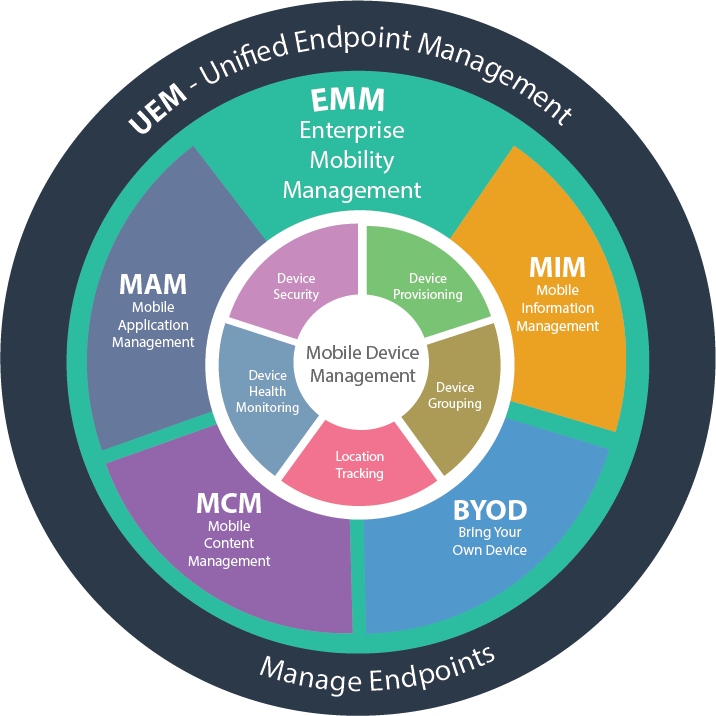The Mobile Threat and How to Deal With It.
From an information security perspective, the mobile device threat has become increasingly significant as smartphones and tablets have become ubiquitous in both personal and professional settings. The proliferation of mobile devices has created new attack vectors and vulnerabilities that organizations must address to protect sensitive data and maintain security.

Here's a detailed examination of the mobile device threat landscape and strategies to mitigate these risks:
The Mobile Device Threat Landscape
Mobile devices present unique security challenges due to their portability, constant connectivity, and the diverse range of applications they can run. The main categories of mobile security threats include:
- Data Leakage: Unintentional data leakage often occurs through insecure apps or user behavior.
- Phishing and Social Engineering: Mobile users are more susceptible to phishing attacks due to smaller screens and real-time email monitoring.
- Malware and Rogue Apps: Malicious software can be inadvertently downloaded, compromising device security.
- Network-based Threats: Unsecured Wi-Fi networks and man-in-the-middle attacks pose significant risks.
- Device Theft or Loss: Physical loss of devices can lead to unauthorized data access.
- Operating System and App Vulnerabilities: Unpatched software can be exploited by attackers.
- Spyware and Stalkerware: These can be installed without user knowledge, often by someone close to the victim.
The scale of the mobile device threat is substantial:
- 94% of malware is delivered via email, highlighting the importance of securing mobile communication channels.
- 84% of businesses report experiencing phishing attacks.
- The average cost of a data breach reached $4.45 million in 2023, the highest on record.
- 74% of cybersecurity breaches are caused by human error, emphasizing the need for robust mobile security measures.
- In 2022, the Federal Trade Commission received over 1.1 million reports of identity theft, many facilitated through web-based attacks.
- More than 90% of employees use personal devices for work purposes, increasing the risk of corporate data exposure.
Strategies to Deal with Mobile Device Threats
To address these security challenges, organizations should implement a comprehensive mobile security strategy:
1. Implement Mobile Device Management (MDM) and Mobile Application Management (MAM)
Use MDM solutions to enforce security policies, remotely wipe lost devices, and manage app installations.
Employ MAM to control access to corporate data within specific applications.
2. Enforce Strong Authentication
Implement multi-factor authentication (MFA) for all mobile devices accessing corporate resources.
Require complex passwords or biometric authentication for device access.
3. Educate Users
Provide regular security awareness training focused on mobile threats.
Teach employees to recognize phishing attempts and practice safe browsing habits.
4. Secure Network Access
Use Virtual Private Networks (VPNs) for secure remote access.
Implement network access control to prevent unauthorized devices from connecting to corporate networks.
5. Regular Updates and Patch Management
Ensure all mobile devices are running the latest operating system versions and security patches.
Implement an automated patch management system for mobile devices.
6. App Vetting and Whitelisting
Implement a process for vetting and approving apps before they can be installed on corporate devices.
Use app whitelisting to restrict installations to only approved applications.
7. Data Encryption
Enforce full-disk encryption on all mobile devices.
Use app-level encryption for sensitive corporate data.
8. Incident Response Plan
Develop and regularly test a mobile-specific incident response plan.
Include procedures for remote wiping of lost or stolen devices.
9. Mobile Threat Defense (MTD) Solutions
Implement MTD solutions to detect and prevent mobile-specific threats in real-time.
Follow guidelines from regulatory bodies like NIST and CISA for mobile security best practices.
10. Secure Development Practices
Ensure that any in-house developed mobile apps follow secure coding practices.
Regularly conduct security assessments and penetration testing on mobile apps.
By implementing these strategies, organizations can significantly reduce the risks associated with mobile devices. It's crucial to adopt a mobile-first security mindset, recognizing that mobile devices are now primary targets for cybercriminals and require specialized security measures.As mobile devices continue to play an increasingly central role in business operations, the importance of robust mobile security cannot be overstated. Organizations must remain vigilant, continuously adapting their security strategies to address emerging mobile threats and protect sensitive data across all endpoints.
For more information and advice just call 01462 416400 or email [email protected].

To find out more about how we can resolve your IT issues please email or call us:
Send us an email Call us +44 (0)1462 416400













